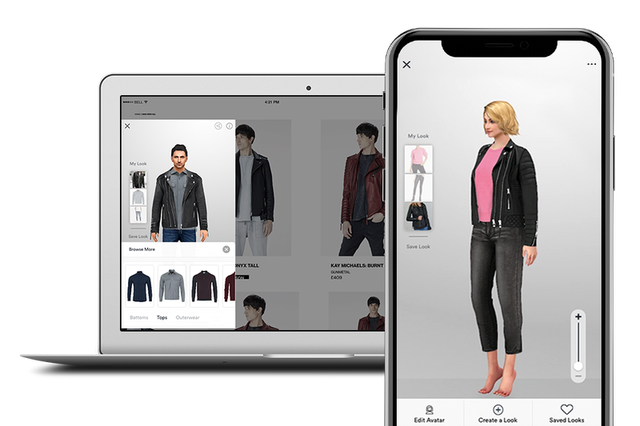Virtual Fitting Rooms: Future of Sustainable User Experiences
By AJ Jarzebiak
Head of Product Strategy & Business Development, Perfitly
With the pandemic setting the scene, emerging digital technologies have the center stage now more than ever before. Touchless commerce, such as Zoom, distance learning, remote working, virtual fitting rooms and online shopping are reshaping the marketplace. According to a 2020 McKinsey report, the digital movement has been accelerated by over five years with no anticipation of slowing down any time soon.
With Virtual fitting rooms, customers have the ability to ‘try before you buy’ along with enriched online shopping experiences, enabling them to make confident purchases, thus supporting healthy conversion rates and eliminating the need for returns.

Now more than ever, online brands and retailers must keep pace with the ever changing retail and sustainability ecosystems. Apparel companies that have pivoted their digital and customer experience strategies to play in the ‘new norm’ have weathered the storm and those that have remained unchanged have gone down with the ship. Moral of the retail story: roll and evolve with the changing tides or crash and get washed up on literal and metaphorical shores.
For the apparel brands/retailers that have remained afloat, they have not gone unscathed, as the industry continues to be plagued with three large problems: high return rates, low conversion rates and a negative environmental footprint. According to The Future of Commerce and Customer Engagement, on average, online ecommerce has experienced return rates between 30% to 40% and conversion rates between 2% to 3%, while on the flip side, in-store performance figures show returns of ~9% and conversion of ~25%. This translates into ~$95 billion in waste cost due to returns and tens of billions in lost sales annually.
The only way to counteract destructive rates is to redirect course by heavily investing in digitization and elevated customer experiences. Virtual fitting rooms, although having been around for over a decade, are beneficiaries of stronger support technologies, such as augmented reality (AR) and virtual reality (VR), which have started approximating in-store experience figures. As a result, virtual fitting rooms have seen explosive growth.
Virtual fitting rooms are built as an exercise in long-term relationship building with customers, creating a bond through personalization. With the customer in mind, online shopping experiences and engagement are enhanced and made to mimic the physical dressing room in the virtual space. The plugin is often embedded on a brand/retailer’s product page, designed to cohesively fit the existing user interface without disrupting the shopper flow. Many virtual fitting rooms cross tabulate size charts to provide size recommendations, while a few other leading solutions use advanced technology builds to create a ‘digital twin’, or avatar of the shopper, and show the interplay of the garment replicating the laws of physics on the shopper’s avatar.
With the ability to ‘try before you buy’ along with enriched online shopping experiences, customers are able to make confident purchases, thus supporting healthy conversion rates and eliminating the need for returns. All of these metrics aid in releasing ‘dead inventory’ from the supply chain whilst supporting sustainability initiatives with a lessened carbon footprint.
The all-encompassing virtual space that virtual fitting rooms lie in, provide greater depth for customers to explore online worlds and communities with a different sense of interaction that becomes a win-win for both the shopper and apparel brand/retailer. It is fair to say that the current state of the retail industry and the global demand for change requires archaic practices to undergo adjustments and advancements—digital transformation is paving the way.





AJ Jarzebiak is the Head of Product Strategy & Business Development at Perfitly, an augmented reality (AR) powered virtual fitting room solution that is being built into the e-commerce platforms of the nation’s leading retailers. With over 10 years of experience in the retail sector spanning across product development, project management, production, merchandising and research & development, AJ has worked with well-known retailers, including Moët Hennessey, Express, Ralph Lauren, Aeropostale and Kohl’s.